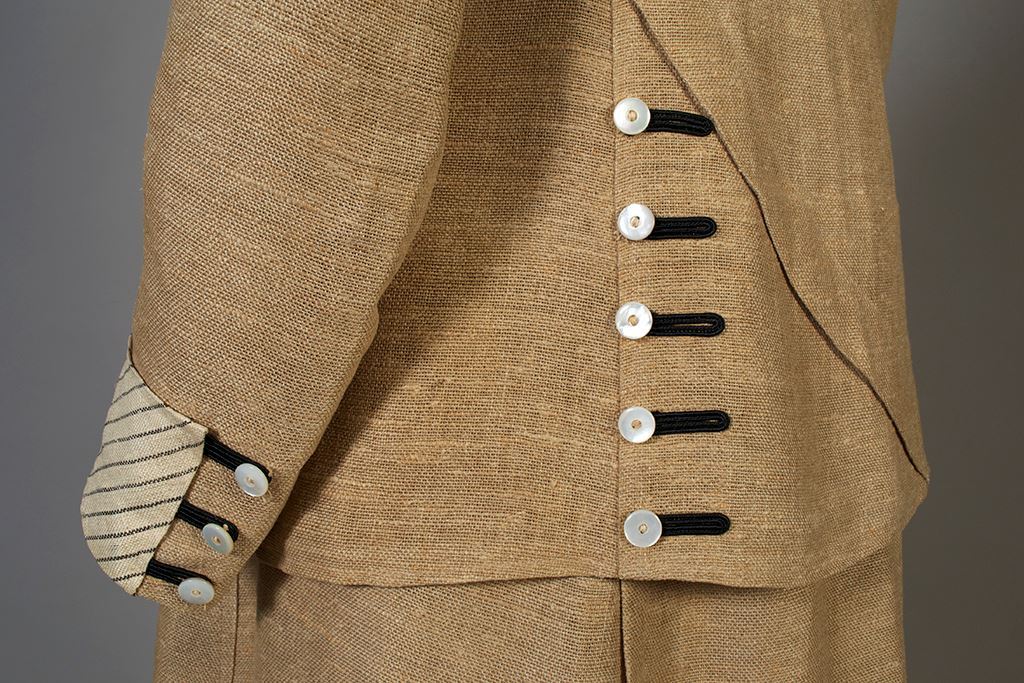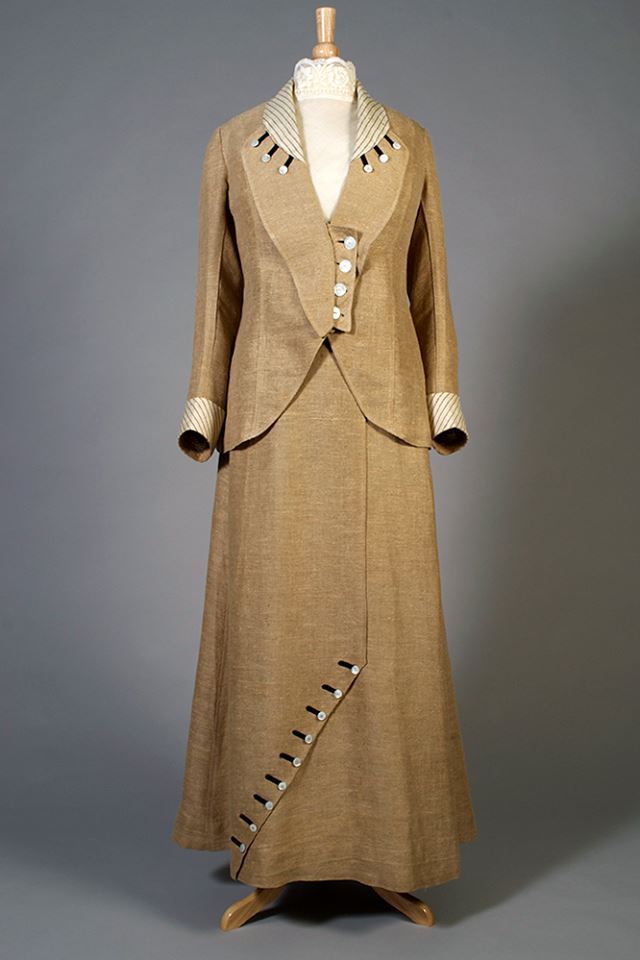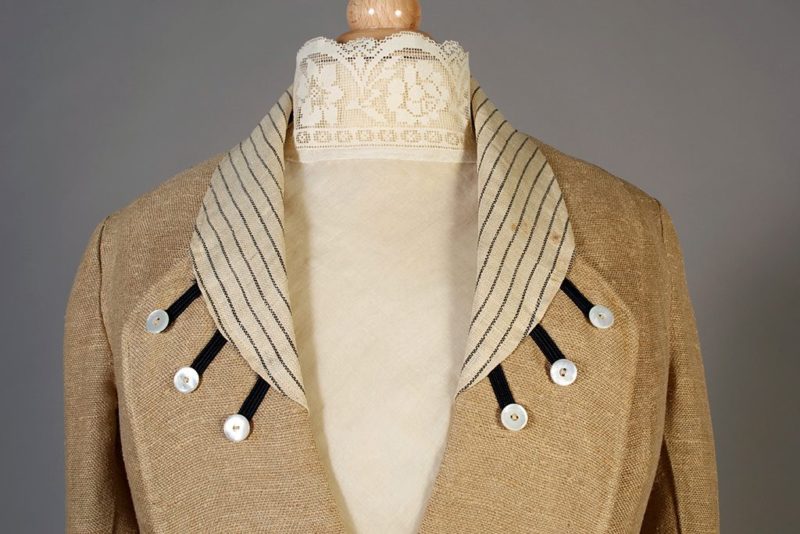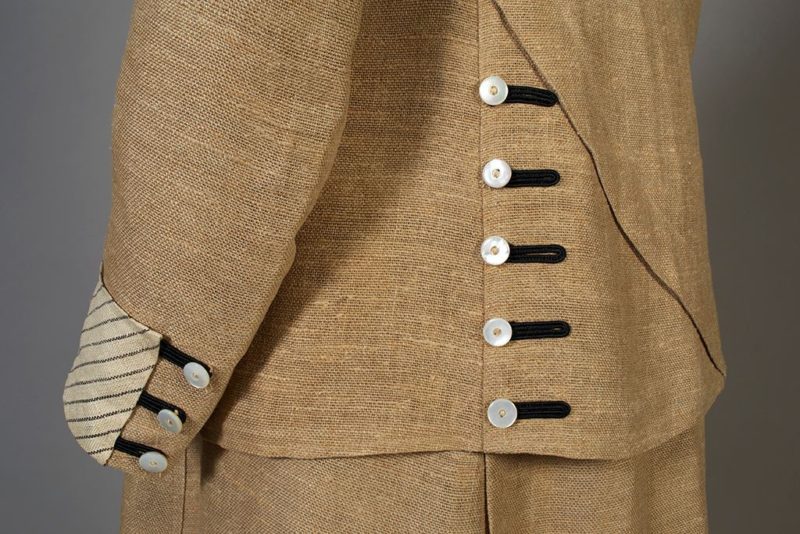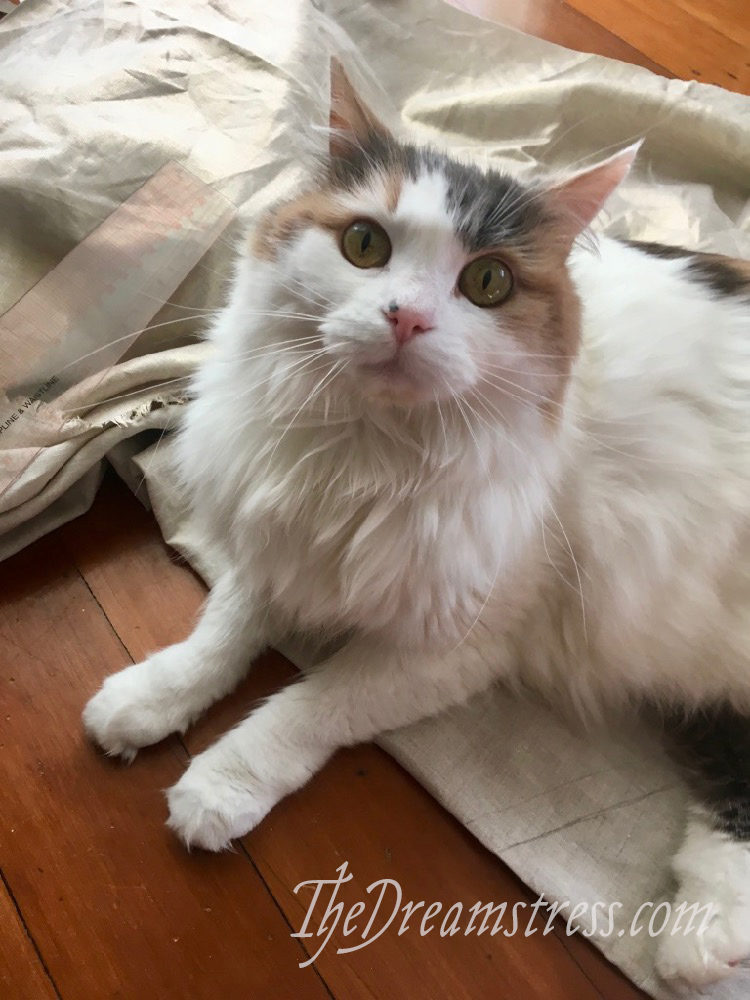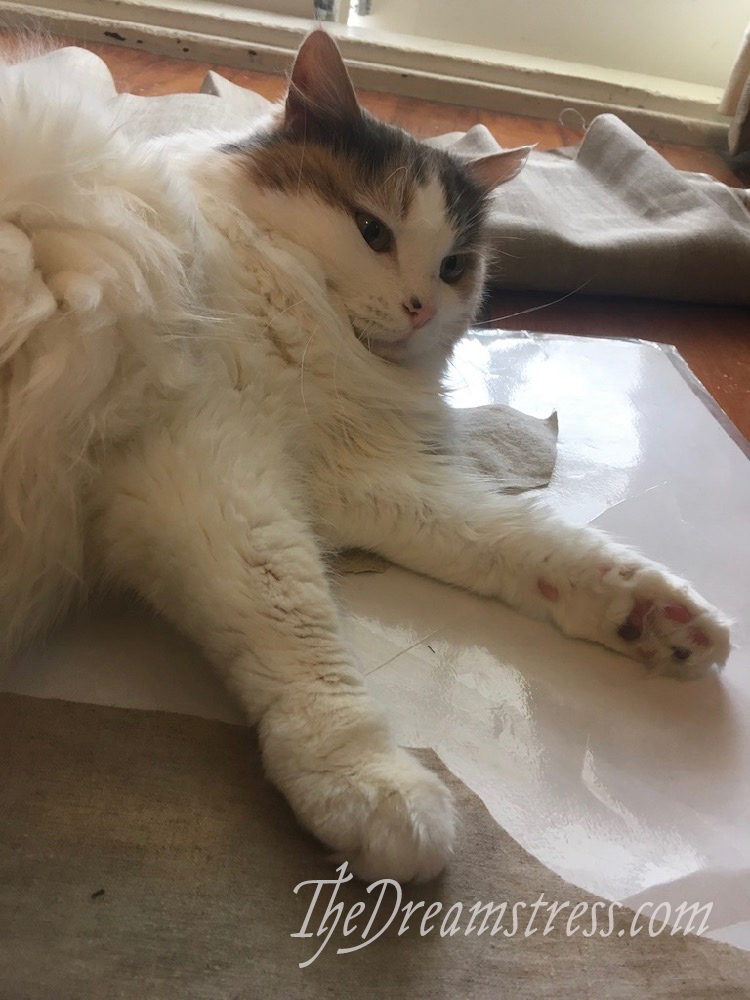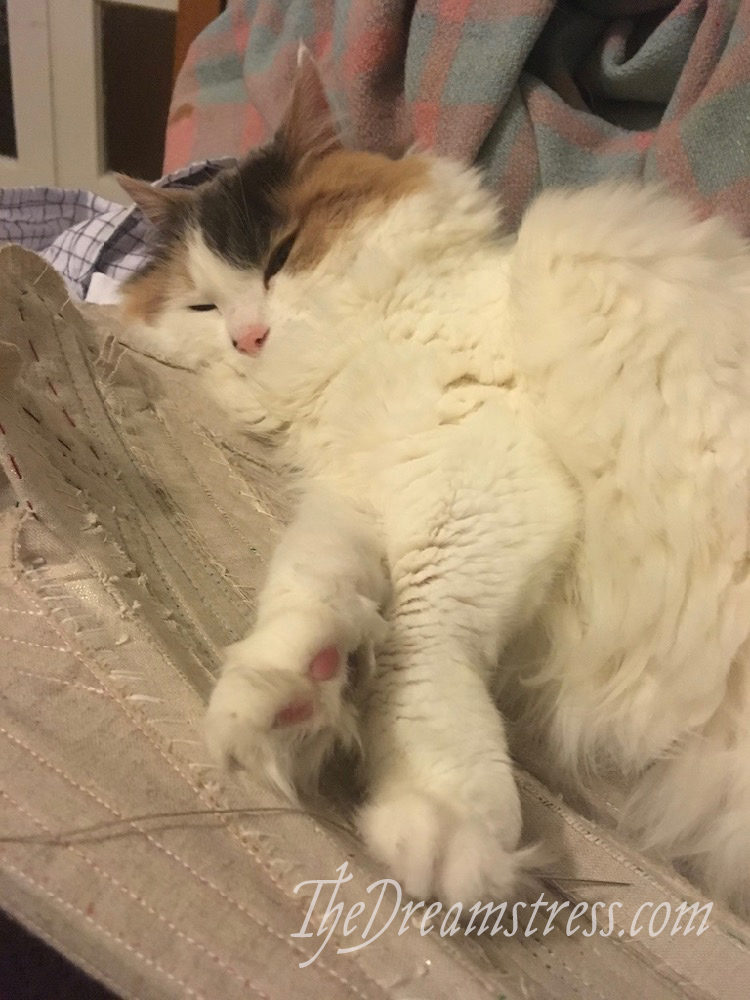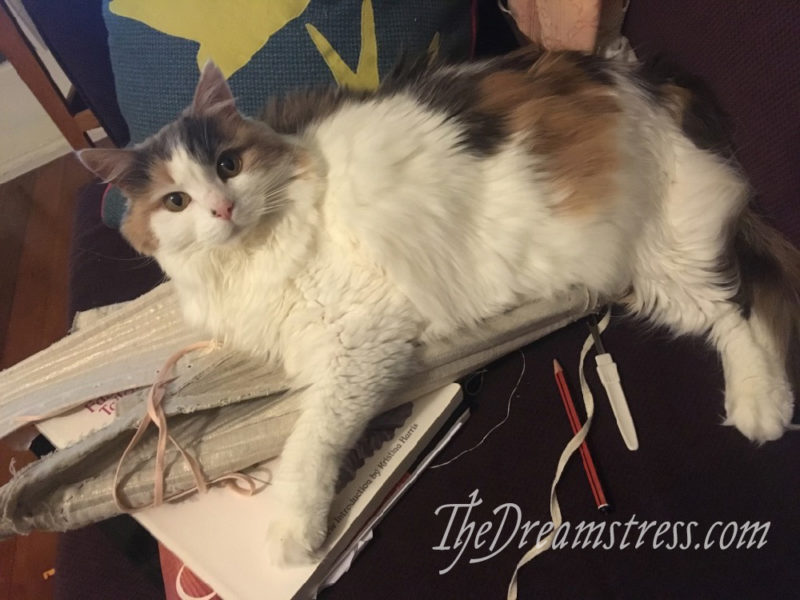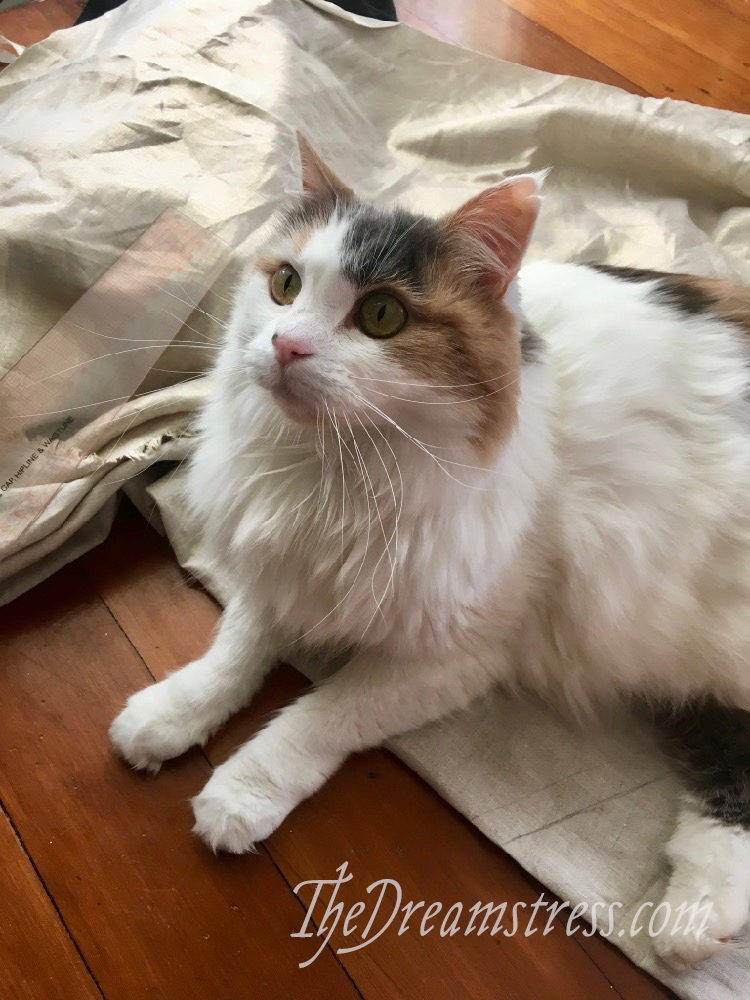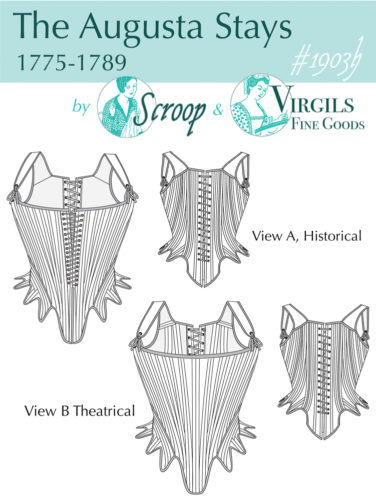
A quick guide to where to find materials for your Augusta Stays. There are a lot of specialty materials needed, so working with a supplier who is familiar with historical staymaking (for View A), or corsetry (for View B) will make the process a lot easier.
In addition to the ones listed, many local fabric shops will carry suitable linens or wools, and with the theatrical stays your fabric imagination can go wild, as long as you achieve the right level of support and strength with your mix of materials.
Have I missed a supplier? Let me know in the comments! I’m most familiar with US & UK suppliers, so a huge thank you to readers who advised me about suppliers in other places.
This list was accurate as of October 2019. The available materials at each supplier change all the time, so we cannot guarantee that the list is still accurate.
View A: Historical:

Everything you need:
Burnley & Trowbridge (US):
This wonderful business is your one-stop Augusta Stays materials shop.
They carry: synthetic whalebone; a wide range of suitable linens, silks, and wools; linen thread & beeswax; seam tapes and binding, and lacing cord; and even tools like awls, and bodkins.
The only thing they don’t have is gums to make your own buckram from their linen. Their paste buckram is not suitable.
Sartor (Czechia)
Sartor has almost everything you need for the historical version of the stays, as well as everything you need for the theatrical stays.
They carry beautiful linens, silks (including the reproduction fabrics they are famous for) and a very small selection of wools, as well as synthetic whalebone and linen thread. The only things they don’t have are linen seam tapes and binding, and sewing tools.
Fabrics & Notions:
MacCulloch & Wallis (UK):
Carries beautiful, but pricey, silks, wools and linens. Not a historical specialist, so you have to know what you’re looking for.
Nehelenia (Germany):
A very small selection of linens and silks, as well as linen thread, linen tape, and beeswax. Unfortunately Nehelenia doesn’t carry synthetic whalebone.
Renaissance Fabrics (US):
Carries a lovely selection of linens, silks and wools.
Wm Booth, Draper (US):
Carries suitable linens, wools, and silks, as well as thread and tape.
View B: Theatrical:
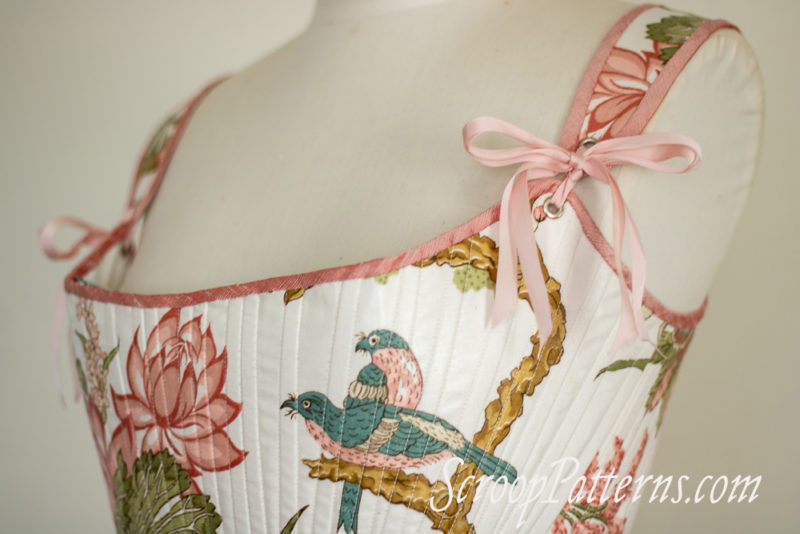
Corsetmaking.com (US):
Carries boning, lacing cord, grommets, and coutils.
Farthingales (Canada):
Has a wide range of corsetmaking supplies, including coutil, lacing cord, grommets, and synthetic whalebone (German Plastic Boning). Their GPB is a type I’m not familiar with, and comes in 7mm rather than the 6mm called for in the pattern, so you might need to adjust the width of the boning channels to accomodate it.
Piccoli Shop (Germany):
Carries synthetic whalebone, aiglets, and possibly other notions.
Richard the Thread (US):
Carries a range of corsetry fabrics, as well as boning, lacing cord, aiglets, grommets and other corsetry essentials.
Röda Tråden (Sweden):
Carries all the basics of corsetry: coutil, synthetic whalebone, grommets,
Sartor (Czechia):
Sartor has everything you need for the theatrical stays: coutil, synthetic whalebone, grommets, and amazing silks for the outer, if you’re that way inclined.
Sew Curvy (UK):
Carries synthetic whalebone, corsetry fabrics, grommets, lacing cord, etc.
Vena Cava Design (UK):
Carries synthetic whalebone, a range of coutils, and lacing cords as well as other bits like aiglets, grommets, and sewing tools.


